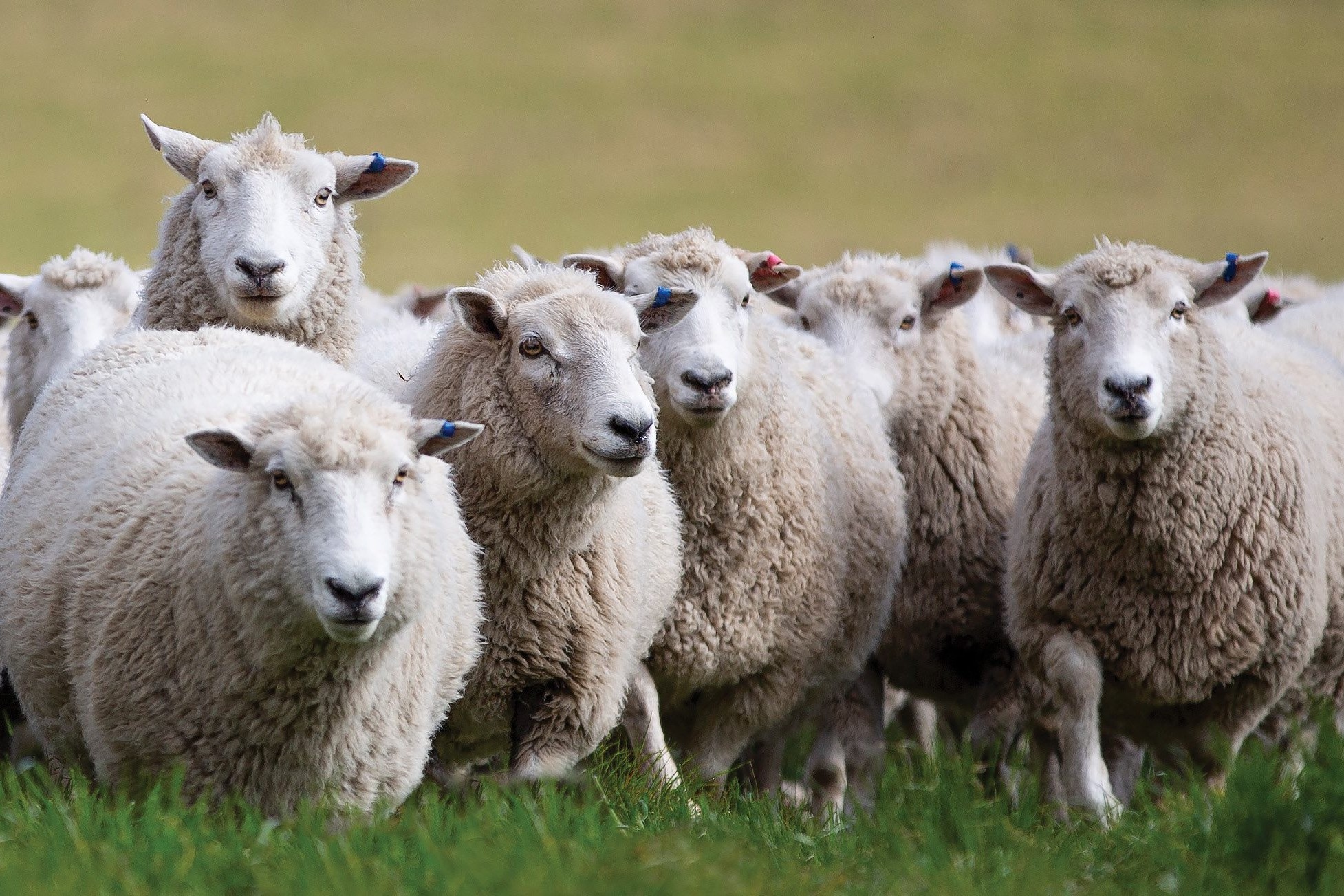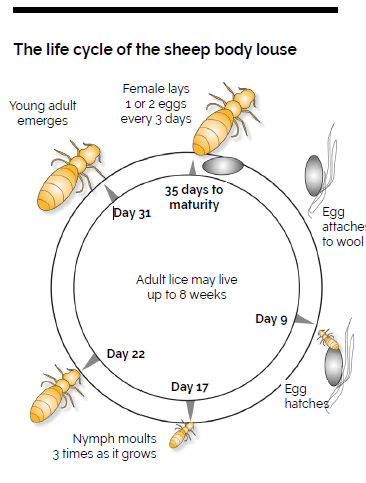Lousy sheep are a big deal
By Joanna Grigg

Two financial incentives to keep lice in check are improved wool cut and quality and, possibly, improved lamb growth rate.
Colin McKay works with veterinarians and animal health retailers across New Zealand. In his role with Elanco New Zealand giving technical advice, he has witnessed changes in farm management which have led to incomplete control of lice.
The first change has been a shift away from full saturation dipping methods, he says, to low-volume methods such as automatic jetting races and pour-on products. This is to save time and treatment costs.
Secondly, many strong wool growers have shifted to once-a-year shearing, to keep costs down. Together, it means more lice are surviving a treatment, and there are fewer treatment chances per year to nail them.
“We’ve seen more infestations in Southland and the North Island, especially in mobs under stress,” McKay said.
“Research in the UK shows that lambs carrying lice had depressed growth rates compared to lice-free, so it’s potentially about lamb production too, not just wool.”
“It used to be a big deal having sheep with lice – you couldn’t sell them. It was all about clean musters and maintaining boundary fences.”
McKay says any chance to produce better quality wool should be a goal, even with strong wool, as a better-quality product has an increased chance of getting a higher price. Farmers often contact McKay after seeing high levels of lice on ewes, just before lambing. They are typically in eight months of wool.

“This is not ideal.”
Emergency treatment of pregnant sheep in long wool is limited to pour on, or in some cases, jetting. Stock welfare and metabolic conditions must be considered with yarding and stress.
The best advice is to make a plan to improve control next year, he says, to keep infestations from ballooning pre-lamb again.
To do this, the first step is planning a treatment post-shearing. Pour-ons are most effective if applied within 24 hours post shear.
“Farmers must treat them, not wait until all the mobs are done and some animals have two or three months’ wool growth, or a more convenient time, as it impacts the results.”
Resistance has been recorded in NZ and Australia to some commonly used lousicides, with rotation of active ingredients recommended as a means to slow the development of resistance.
McKay gives an example. A dual active product like Zapp Encore (with Insect Growth Regulator and a knockdown chemical) is suitable but it should be alternated with another class of activity with the following treatment, for example a Spinosad.
Ultimately, saturation at four weeks post-shearing is the best bet, he says.
“However, lack of saturation dipping equipment, shearing programmes, lambing dates and stocking policy all conspire to make this unachievable on many farms.”
Application of louse products needs to be thorough and exactly as per product label. If jetting, he recommends checking water quantities per head by measuring the balance of a full 1000-litre tank once the first 100 sheep run through, to see litres used/head.
“The surface area of a sheep is more than what you think.”
The rule of thumb is two litres per sheep and half a litre for every month of wool grown, he says.
“Australian farmers often plunge dip once every five years and use off-shears pour ons in the intervening years.”
If there is widespread lousiness throughout a flock it may require two treatments in a year; off shears and again in the autumn, to reduce louse numbers to acceptable levels, he says.
“Applying chemicals to sheep is just part of an overall louse control programme – all of the stock advice provided to farmers during the days of compulsory dipping remain valid – treating all stock on a defined date, maintaining good biosecurity, secure boundaries, clean musters and checking bought-in sheep for lice.”
Monitoring the effectiveness of any treatments applied is also key. McKay would love to see research on chemical resistance in the lice population in NZ.
“We have had no independent research done since the AgResearch entomology unit wound up 20 years ago.”
“We have to rely on Australian data, which tells us there is resistance to a number of active ingredients including louse-effective insect growth regulators.”
Synthetic pyrethroid resistance was found in NZ in the 1990s.
“Synthetic pyrethroids replaced organochlorines in the 1970s and were very widely used over a long period of time.”
Organophosphate products are still available and very effective against lice but care must be taken when using them.
Australia has a bigger range of products available than NZ, as a result of the cost to register a new product here and scale of the market.
The Davies Livestock Research Centre (Adelaide) is working on a way to test if sheep have lice, during shearing. DNA samples are taken from the shearing combs and processed quickly on site, under 60 minutes. This means farmers can identify if sheep are lice-free and don’t need treatment off-shears. NZ had a core test for bales of wool, to identify if lice were present at the time of shearing, but the information gained was largely historic and farmers didn’t use it, McKay says.
Sheep lice cost the Australian sheep industry more than $120 million annually. Lousy sheep not only produce about 10% less wool, but also further decrease wool quality value about 10% plus the costs of chemical treatment.
• For more NZ information see Managing Flystrike and Lice booklet, B+LNZ, 2019. McKay was a contributing author.
• Sheep lice are surface grazers (they don’t suck blood).
• Live at the base of the wool fibres on the skin, where they consume surface debris. This can cause intense irritation.
• Shearing removes 50-70% of lice with the fleece. When followed with a correctly applied chemical treatment, is an opportunity for eradication.
• Immediately after shearing, grease flows from a sheep, so off-shears is best time to treat.
• One study found lice could survive for up to 10 days on shearers’ moccasins. Change clothes and footwear if recent contact with lousy sheep.
• Clean the shed of wool pieces (board and yard area).
• Treat bought-in/returned stock as infected.
• Don’t forget to treat ewe hoggets, late prime lambs, rams and the dog tucker mob.




